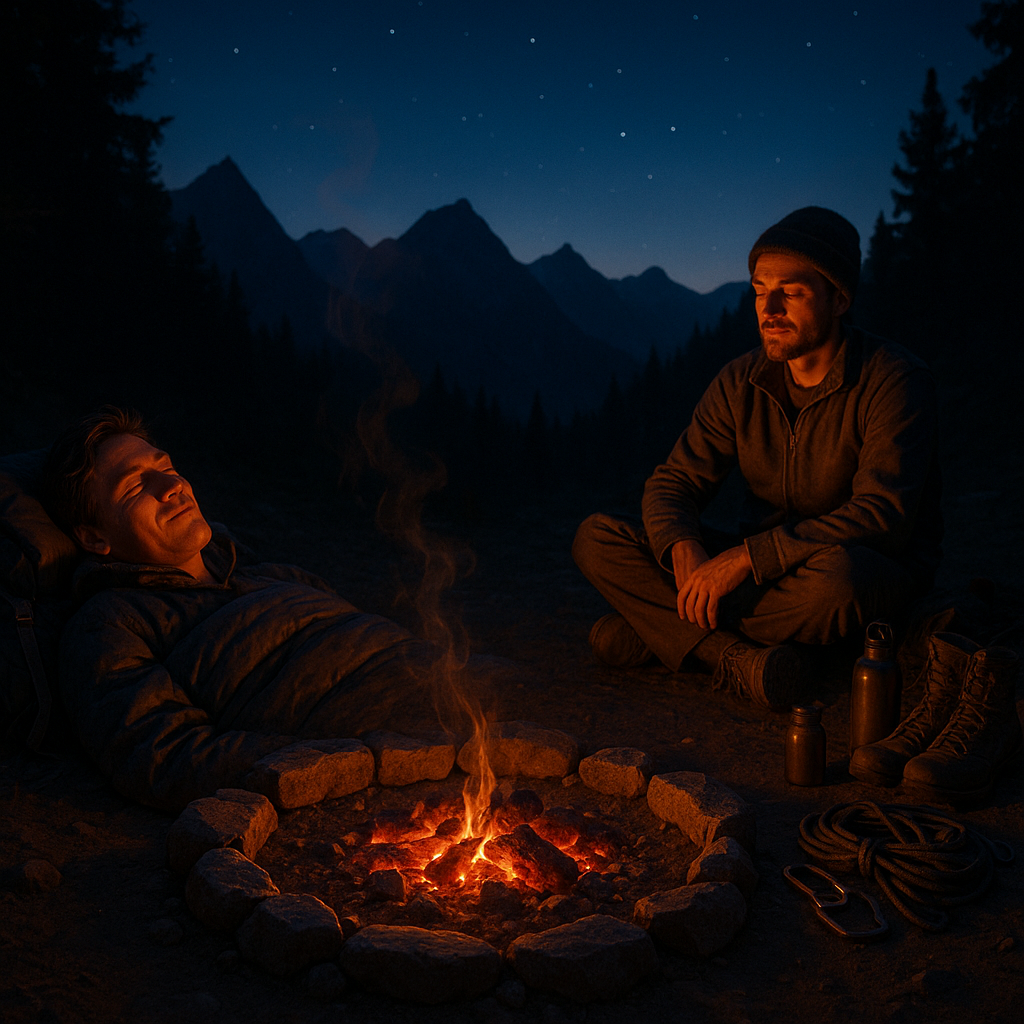Key Takeaways
- Fire-lit cooking preserves cultural legacies. Cooking with fire is deeply entwined with cultural identity, especially in indigenous traditions, where it transcends sustenance to become a living narrative of heritage and ritual.
- Flames shine light on storytelling through food. Fire portraits visually capture the unscripted intimacy of human connection, showcasing the art, passion, and stories behind flame-cooked meals.
- Flame-lit photography thrives in creativity and versatility. Capturing portraits in firelight requires a balance of artistry, patience, and innovation, transforming challenging lighting conditions into evocative, cinematic visuals.
- Outdoor chefs embody the soul of elemental cooking. These cooks blend tradition with raw creativity, using open flames to bring their craft to life while embracing nature as their kitchen.
- Fire-crafted meals merge artistry with technique. Beyond recipes, cooking with fire demands instinctual mastery of elements like heat control, smoke use, and timing to create dishes that embody both skill and spirit.
- Fire cooking breathes life into underrepresented stories. By documenting these chefs and their traditions, fire portraits amplify voices often unheard, celebrating resilience, community, and the rich tapestry of culinary heritage.
- The universal warmth of fire fosters connection. Fire-cooked meals embody an ancient human ritual, drawing people together to share flavors, stories, and memories under the glow of flame.
Fire portraits unveil a breathtaking meeting point of food, culture, and storytelling. As we venture deeper into these poignant images and the narratives they hold, we uncover the artistry, tradition, and humanity that fire-cooked meals keep alive, inviting all of us to reconnect with these elemental roots.
Introduction
A flicker of flame in the dimming wilderness holds more than warmth. It carries the echoes of ancestors, the rhythm of ritual, and the art of survival. Fire portraits capture this alchemy, illuminating not just the faces of those who cook with fire, but the generations of heritage their hands preserve.
Every ember-charged meal, prepared beneath wide, moody skies, becomes a living canvas of culture and kinship. Smoke etches stories in the cool evening air, and firelight sketches silent but vivid narratives across every visage. As we embark on this visual journey, we step closer to the fire, ready to discover the soulful techniques, untold traditions, and creative mastery at the heart of elemental cooking in the wild. This is where untold stories await, flickering in the glow.
The Art of Fire-Lit Storytelling
Understanding the true power of fire-lit storytelling begins with witnessing how flames shape the faces and hands of cooks around the world. As dusk settles, fire portraits freeze the ancient dialogue between humans and the primal energy of flame. Bathed in molten gold and shadow, these images reveal far more than the physical act of cooking; they unveil generations of wisdom and the timeless exchange between nourishment and nature.
Stay Sharp. Stay Ahead.
Join our Telegram Channel for exclusive content, real insights,
engage with us and other members and get access to
insider updates, early news and top insights.
 Join the Channel
Join the Channel
Careful framing and intentional composition allow photographers to capture the grit on a pit master’s palms as they test coals by touch. The quiet, patient smiles of elders passing down fire lore to curious grandchildren. The laughter and camaraderie that naturally circle a well-built campfire. Shared feasts beneath a sky bursting with stars. Each vivid portrait is a capsule storing tradition, skill, and fearless connection.
Technical Mastery Meets Emotional Truth
Mastering fire portraiture is both a technical challenge and an emotional pursuit. The most evocative images emerge as the last sunlight mingles with flickering flames, sculpting subjects’ faces in a dance of shadow and warmth. Photographers must move quickly and flexibly, anticipating those rare unguarded moments when the fire’s glow unearths joy, focus, or awe.
To capture portraits that linger in memory, consider these essential elements:
- Dynamic Range Management: Carefully balance the vibrancy of flames against encroaching twilight, ensuring neither is lost to overexposure or shadow.
- Natural Positioning: Invite candid, natural engagement with fire, highlighting authentic gestures and genuine relationships with the element.
- Timing: Train your eye to seize the split-second when a subject’s expression and the leaping flame harmonize.
- Environmental Context: Frame enough of the surrounding landscape, be it a windswept summit, remote riverside, or intimate backyard, to root each portrait in its unique story.
Often, the magic comes not from posed shots, but from authentic exchange between the cook and their fire. As one seasoned fire photographer shares, “I’m not just capturing food or faces. I’m documenting a lifelong conversation between humanity and fire, one that’s both ordinary and sacred.”
Cultural Preservation Through the Lens
Fire-based cooking isn’t just a culinary technique; it’s a living archive of culture. Across continents and climates, methods of cooking with fire whisper the heart of identity and resilience. In the rolling grasslands of Argentina, asadores tend massive parillas with slow, deliberate patience passed down for centuries. In South Africa, braai masters turn simple gatherings into celebrations of heritage. Meanwhile, Aboriginal pit cooks in Australia keep ancient stories alive with each coal they bank.
Thoughtful photography transforms these moments into visual chronicles. Such images become much more than art; they serve as cultural testimony, preserving endangered techniques and giving voice to culinary rituals that might otherwise fade.
Through these fire portraits, we see:
- Regional adaptation: Cooking methods shaped by geography, resources, and necessity.
- Social structures: Community, hierarchy, and shared labor around the fire.
- Ceremonial meaning: Feasts that mark rites of passage, harvests, or renewal.
- Environmental wisdom: Practices that reflect respect for land and resources.
In doing so, photographers act as both artists and cultural guardians, safeguarding living traditions for future generations while illustrating how elemental fire still fuels connection in the modern world.
The Human Element of Fire Craft
At the core of every fire portrait is the spark of a personal journey. Consider Maria, a third-generation comal artisan in Oaxaca, whose weathered yet graceful hands are rendered luminous in the firelight as she shapes corn into story-rich tortillas. Or James, the bush cook whose rugged features and knowing eyes tell of decades reading wind, wood, and weather in the outback. These are not merely portraits; they are windows into a dialogue between mastery, memory, and place.
Such portraits reveal:
- Mastery in Motion: The effortless rhythm of seasoned hands, moving instinctively as flames crackle and glow.
- Generational Knowledge: The tender transfer of tradition, as elders demonstrate and apprentices learn by watching and doing.
- Communal Bonds: The way fire draws circles of friends, family, and strangers together, creating a tapestry of shared experience.
- Individual Innovation: Each cook brings unique improvisation, evolving tradition with subtle flourishes that enrich the broader story.
In healthcare, similar rituals of mentorship and expertise can be seen in traditional healing ceremonies, echoing how skills and values migrate across generations. In the world of tech or finance, the “passing of the torch” metaphor takes on new light, underscoring how fire, in any form, remains a powerful connector across time and field.
Modern Interpretations of Ancient Ways
The present-day resurgence in fire-based cooking is lighting new creative paths across unexpected industries and communities. From rooftop smokehouses in bustling cities to pop-up wilderness feasts in alpine clearings, today’s fire chefs and enthusiasts blend ancient methods with modern curiosity. This fresh take on elemental cooking invites innovative storytelling, balancing homage to tradition with a playful embrace of contemporary culture.
Photographers now frame:
- Urban fire gatherings that forge unlikely communities in concrete jungles.
- Professional chefs and amateur cooks drawn from diverse disciplines, leaving behind conventional kitchens for the unpredictable beauty of open flame.
- Cross-cultural collaborations, such as Korean barbecue techniques merging with South American asado, or Indigenous Australian pit roasting techniques explored by culinary students worldwide.
- New technologies (infrared thermometers, sustainable fire pits, weatherproof gear) that allow fire traditions to thrive in today’s fast-paced, eco-conscious world.
This living evolution of fire cooking extends far beyond the kitchen. In healthcare, mobile clinics in rural areas sometimes use traditional open-flame methods to prepare medicinal meals, blending modern diagnostics with heritage. In education, outdoor classrooms harness the unifying power of fire circles for storytelling, science, and hands-on history lessons. Environmentalists use controlled burns as tools of renewal and stewardship, drawing on ancient wisdom to care for fragile ecosystems.
Across all these settings, the blending of old wisdom with modern perspective ignites a storytelling renaissance, one vividly captured in flame-lit portraits that honor both heritage an





Leave a Reply